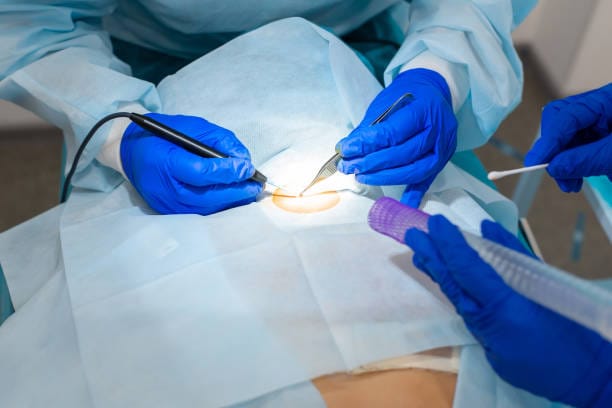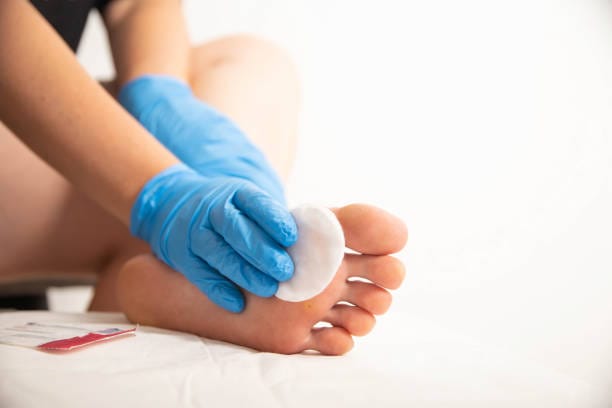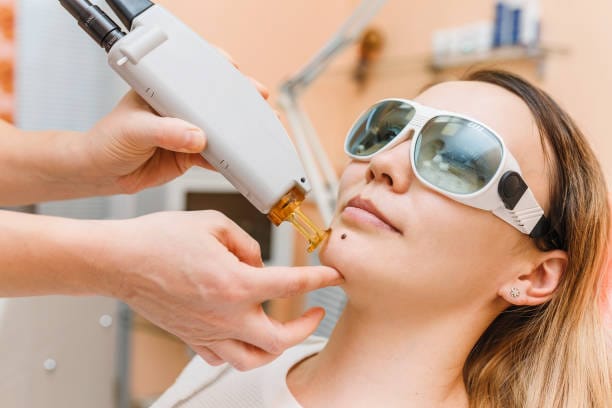
What to Expect During a Verruca Treatment Procedure
Verrucae are small, rough growths on the soles of the feet caused by the human papillomavirus (HPV). They can be very painful as you walk and must be treated professionally for removal.
You may wonder what to expect if you want to undergo a verruca treatment. Usually, the treatment process includes consultation, selection of the right treatment method, procedure, and aftercare. Cryotherapy, laser therapy, salicylic acid treatments, and electroProcedure are all safe and effective ways to remove verrucas.
Here is a guide to verruca treatment, exploring each step so you feel prepared and confident. Whether you experience the problem short-term or long-term, understanding the process will assist you in making the right decision for your skin health.
Verruca Treatment Procedure, Diagnosis & Consultation
A professional diagnosis must be made before a verruca treatment procedure is started. It can be difficult to tell if a verruca is a verruca or callus, so a specialist will examine the affected area to confirm its diagnosis. Small black dots, clotted blood vessels, or pain when squeezing the sides of the growth may prompt the specialist to check.
During the consultation, the specialist will check the size, depth, and number of verrucas. They will also ask about any previous treatments and your pain tolerance and will be willing to use your medical history to determine the best treatment. Small verrucas may be treated with cryotherapy, while larger and more stubborn verrucas may be treated using laser therapy or electroProcedure.
Your doctor may offer pre-treatment advice before the procedure. Softening the verruca with salicylic acid, avoiding self-treatment methods that will worsen the problem, and cleaning the area are all viable options. If you decide on a procedure that includes numbing, they are most likely to discuss anaesthesia options.
A consultation is the proper way to ensure you receive the best verruca treatment and maximise your chances of a good result without discomfort.
Common Verruca Treatment Procedures
Proper verruca treatment procedures exist and include several professional procedures. Treatment is based on the verruca’s size, location, severity, and duration. The most common methods used in clinics are summed up below.
1. Cryotherapy
One of the most popular treatments for verrucas is cryotherapy. The procedure involves using nitrogen in the contaminated tissue, freezing it, and causing it to die and eventually fall off. In the process, below is what takes place:
- A specialist sprays or applies liquid nitrogen to the lesion with a spray or cotton swab.
- A blister will form over the verruca, as this freezing causes.
- After 1–2 weeks, the blister dries up, and the verruca falls over it.
- Sometimes, 2–3 spaced-out sessions (2–3 weeks) are needed.
However, cryotherapy is quick and effective but can cause slight discomfort during and after the freeze. Small to medium verrucas probably worked best.
2. Laser Treatment
Usually, laser treatment is appropriate for stubborn or deep verrucas if other treatments have not been suitable. It burns and destroys the verruca tissue by using intense light energy. Here’s how the procedure works:
- A local anaesthetic is given to deaden the area to minimise pain.
- Using a high-energy laser, the verruca is targeted, and the blood supply is cut.
- The verruca gradually goes away within a few weeks.
- It will take 2–4 weeks to heal with slight redness and tenderness of the area.
Laser treatment is precise and, therefore, reduces the risk of scarring. However, it can be unsuitable for those with sensitive skin.
3. Salicylic Acid Treatment
Salicylic acid is applied to the verruca, which causes it to suffer from a similar attrition layer by layer over time. Treating smaller verrucas with other therapies, such as cryotherapy, is also frequently recommended. Here’s how it works:
- The specialist directly applies the high-strength salicylic acid solution onto the verruca.
- It dissolves the thickened skin and kills the virus-contaminated cells.
- Within several weeks, the verruca will soften, disappear and shrink.
This system is used daily for 6 to 12 weeks, and frequent trips to the doctor are recommended to check the progress. However, it acts more slowly and is not invasive.
4. ElectroProcedure
ElectroProcedure is a more aggressive version of treatment for large or recalcitrant verrucas. It is a process in which the verruca is burnt and removed using an electric current. The procedure includes:
- Local anaesthesia of the area.
- Heating and Destroying the verruca by using an Electric Probe.
- It heals in about 2 – 4 weeks, and the mild scabbing.
However, there was a high rate of success with electroProcedure but with the risk of leaving a small scar, especially inside deep verrucas.
5. Needling
Needling is a lesser-known, very effective treatment for verrucas that come back. It does not kill the virus but stimulates the body’s immune system to fight it. The procedure involves:
- Repetitive puncture of the verruca with a fine needle.
- This prompts an immune reaction, which results in the death of HPV.
- Healing is expected to occur in a few weeks with virtually no downtime.
In most needle cases, local anaesthesia is unnecessary, and the needling takes only one session.
In line with each one of these verruca treatment processes, there are pros and cons for the amount of time it will take you to recover. The right option depends on the severity of the verruca, how much someone can tolerate pain and individual needs. According to the situation, a professional consultation is made to determine the most appropriate solution.
All of these verruca treatment procedures have their benefits and recovery time. The option chosen is based on pain tolerance, tolerance and whether the verruca sore has worsened or not. A professional consultation allows us to decide the best solution for the problem.
Step-by-Step Verruca Treatment Procedure
A verruca treatment procedure will involve several steps – from preparation to procedure – and after. The process varies slightly depending on the chosen treatment method, but most processes have a general format. Here’s what you can expect:

1. Preparing for the Procedure
Before actual treatment, a specialist will:
The best strategy will depend on the Verruca’s type. A separate container is used to mix the cleaning and disinfectant solution. In other cases, however, the verruca is treated by trimming away excess skin.
Normally, patients are advised to leave the site dry and not to treat it at home with over-the-counter wart removers or other products before the procedure.
2. The Treatment Process
There is an individual method for each verruca treatment procedure:
Cryotherapy:
- A specialist uses a spray or cotton swab to apply liquid nitrogen to the verruca.
- The freezing process is up to a few seconds but is very painful and causes a burning or stinging sensation.
- The blister forms within 24–48 hours, and the verruca turns white.
If needed, it is repeated in subsequent sessions.
Laser Treatment:
- Local anaesthesia is used to make the area numb.
- The verruca is cut out, and its blood supply is deprived precisely with a laser beam.
- The verruca may take 15–30 minutes, depending on how large the verruca is.
- A few weeks later, the scabs over the treated area healed.
Salicylic Acid Treatment:
- A salicylic acid solution of moderate strength is applied to the verruca.
- The thickened skin slowly breaks down with the acid.
- If required, the verruca needs to be filed between applications.
- This treatment is repeated by the child daily for many weeks.
ElectroProcedure:
- Local anaesthesia is used to numb the area.
- Verruca can be treated by burning and removing it with a heated probe.
- The treated area is healed over 2–4 weeks by forming a scab.
Needling:
- The area is numbed by local anaesthesia.
- The verruca is repeatedly punctured with a fine needle to cause an immune response.
- In the weeks that follow, the verruca shrinks and eventually disappears.
3. Immediate Aftercare
After the procedure has been done, the specialist will:
- Also, apply a protective dressing or bandage.
- Give instructions on how to keep the area clean.
- Recommend pain relief, paracetamol or ibuprofen.
- It is recommended to avoid swimming or placing excessive moisture in the area.
Depending on the treatment, this may result in mild swelling, redness and discomfort.
4. Follow-Up and Healing
There may be a need for more than one session of cryotherapy and laser treatment.
Salicylic acid has to be applied daily for several weeks.
Only one session is usually required for electroProcedure and needling. Healing takes a few weeks.
The idea is to leave any scab alone and let it fall off naturally, as scarring can occur.
Every method is intended with safety and effectiveness criteria to yield long-term results.
Verruca Treatment Procedure – Recovery and Aftercare
Proper aftercare of a verruca is crucial for a smooth recovery and prevents the verruca from returning. There is no set time for healing; most will heal in a few days after treatment, depending on the treatment, but not while most patients can return to normal activities. You must be bothered about continuing recovery and aftercare following the verruca treatment procedure.
1. Immediate Post-Treatment Care
The treated area will likely feel sore, swollen, and sensitive within several weeks after the procedure. This is to promote healing and help decrease discomfort.
- Keep the area clean and dry.
- Avoid causing damage or Disease to the treated skin by refraining from touching or picking at the area.
- If the specialist advises you to apply an antiseptic cream or ointment.
- Protect the area with a bandage or dressing if in a weight-bearing part of the foot.
- If you need pain relievers, take ibuprofen or paracetamol.
- A blister may form within 24–48 hours for cryotherapy or laser removal treatments. This is a normal part of healing and should be left as is.
2. Activity Restrictions and Healing Time
- Depending on the verruca treatment procedure, the recovery time would be:
- Cryotherapy: You will need 1 or 2 weeks while the blister dries and the verruca falls off.
- Laser treatment also involves creating a scab, which will heal in 2 – 4 weeks.
- Therefore, salicylic acid treatment requires daily application for many weeks until the verruca is gone.
- ElectroProcedure is similar to minor Procedure in that a scab immediately forms, which takes 2–4 weeks to heal. Mild tenderness is also present after the procedure.
- Healing takes about 2–3 weeks, and verruca shrinkage is gradual.
- Swimming, public showers and excessive moisture should be avoided by patients until the area treated heals completely.
3. Preventing Recurrence
- Taking measures to prevent reDisease is important since the HPV virus causes verrucas.
- Use flip-flops in communal showers and pools.
- Clean and dry feet to decrease viral spread.
- Stay away from other verrucas – including your own and other people’s.
- Have a healthy diet and a good sleep to enhance your immune system.
Verruca Treatment Procedure: Additional Considerations

Verruca Treatment for Different Age Groups
Verrucas can occur in children and adults, but how they are treated depends on age and skin sensitivity.
They are common in children, especially if they have been in a communal area, such as a swimming pool. Cryotherapy and salicylic acid treatment are the most common treatments, while laser or electroProcedure may not be advised in younger children because they are uncomfortable. Only a specialist can tell his parents the safest, most effective option.
Verrucas in an adult can be more stubborn and painful if left over for a long time. Some treatments, such as laser therapy, needling, or electroProcedure, may be used to hasten removal.
Verruca Treatment Procedure: Myths vs. Facts
Many misconceptions exist about verrucas and their treatments. Here are some of the myths and facts behind them.
Myth 1: Verrucas will always disappear on their own.
Fact: Although some verrucas go away on their own, others can last months or years and require professional removal. That’s where you have to get some help.
Myth 2: Cutting a verruca off will eliminate it for great.
Cutting off a verruca at home will not work and can lead to Disease or spread the virus further. Proper medication treatments treat the virus at its root.
Myth 3: Verrucas are only found in those with bad hygiene.
Fact: Verrucas spread through contact with contaminated surfaces, it isn’t always about hygiene. However, it plays an important role. If you got in contact with someone who had the Disease, you can get verrucae because of it.
How Long Do Verruca Treatments Take to Work?
The effectiveness and duration of verruca treatment depends on which method is chosen.
- Cryotherapy: Typically, you will need 2–3 sessions for lasting results, usually in 3–4 weeks.
- Laser Therapy: Healing may occur in about four weeks, but only one treatment may be necessary.
- Salicylic Acid: It takes many weeks for the line to disappear, such as 6–12.
- ElectroProcedure: Verrucas are removed in one session and will take 2–4 weeks to heal.
- Different therapies and treatments are available for activity. Needling: Wartivity may need 2–3 weeks to shrink and disappear.
However, each method’s level of effectiveness varies, which is why a specialist from Revitalise London is the best person to clarify any doubts.
Why Choose Revitalise London for Verruca Treatment?
Through Revitalise London, we utilise the most up-to-date Verruca treatment procedures and are experienced in providing professional Verruca treatment via these various methods. We are the most suitable company to remove your verruca; here’s why.
Verruca Treatment We offer many options for verruca treatment, including cryotherapy, laser therapy, electro Procedure and needling, depending on your condition for the maximum effect.
- Precise, professional care—our trusted practitioners and expert specialists have years of experience treating stubborn verrucas.
- We choose what is best for the patient. This means the least invasive treatments and numbing solutions when possible until the patient is comfortable and pain management is in place.
- Target Verrucas At The Root: We treat verrucas where they form, reducing the chance of recurrence and ensuring fast healing with minimal downtime.
- Sterile and Safe Environment – We maintain a hygienic and safe environment for every patient.
- We Offer Personalized Aftercare, Including written instructions on recommended aftercare and follow-up, to help you recover from the verrucas and prevent them from returning.
If you have verrucas, you do not have to let them affect your confidence or comfort. Revitalise London can help. Book a consultation for the first step towards clear, healthy skin today.
